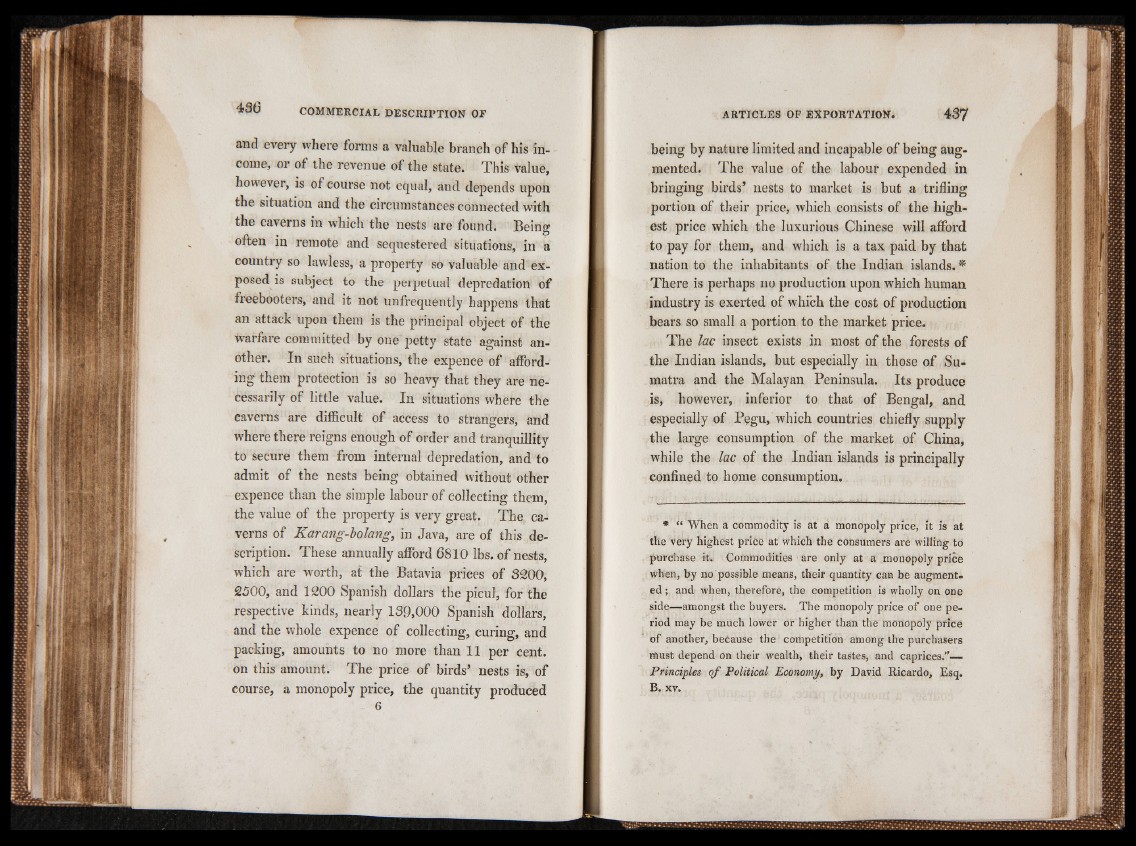
and every where forms a valuable branch of his income,
or of the revenue of the state. This value,
however, is of course not equal, and depends upon
the situation and the circumstances connected with
the caverns in which the nests are found. Beino>
often in remote and sequestered situations, in a
country so lawless, a property so valuable and exposed
is subject to the perpetual depredation of
freebooters, and it not unfrequently happens that
an attack upon them is the principal object of the
warfare committed by one petty state against another.
In such situations, the expence of affording
them protection is so heavy that they are necessarily
of little value. In situations where the
caverns are difficult of access to strangers, and
where there reigns enough of order and tranquillity
to secure them from internal depredation, and to
admit of the nests being obtained without other
expence than the simple labour of collecting them,
the value of the property is very great. The caverns
of Karang-bolang, in Java, are of this description.
These annually afford 6810 lbs. of nests,
which are worth, at the Batavia prices of 3200,
2500, and 1200 Spanish dollars the picul, for the
respective kinds, nearly 139,000 Spanish dollars,
and the whole expence of collecting, curing, and
packing, amounts to no more than 11 per cent,
on this amount. The price of birds’ nests is, of
course, a monopoly price, the quantity produced
6
being by nature limited and incapable of being augmented.
The value of the labour expended in
bringing birds’ nests to market is but a trifling
portion of their price, which consists of the highest
price which the luxurious Chinese will afford
to pay for them, and which is a tax paid by that
nation to the inhabitants of the Indian islands. *
There is perhaps no production upon which human
industry is exerted of which the cost of production
bears so small a portion to the market price.
The lac insect exists in most of the forests of
the Indian islands, but especially in those of Sumatra
and the Malayan Peninsula. Its produce
is, however, inferior to that of Bengal, and
especially of Pegu, which countries chiefly supply
the large consumption of the market of China,
while the lac of the Indian islands is principally
confined to home consumption.
* “ When a commodity is at a monopoly price, it is at
the very highest price at which the consumers are willing to
purchase it. Commodities are only at a monopoly price
when, by no possible means, their quantity can be augmented
; and when, therefore, the competition is wholly on one
side—amongst the buyers. The monopoly price of one period
may be much lower or higher than the monopoly price
of another, because the competition among the purchasers
must depend on their wealth, their tastes, and caprices.”—
Principles of Political Economy, by David Ricardo, Esq.
B. xv.